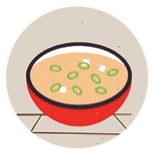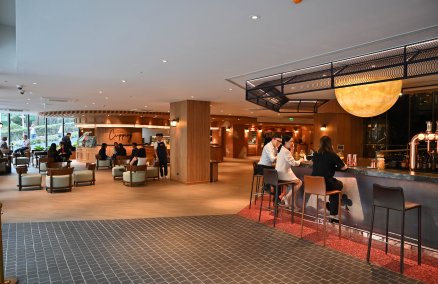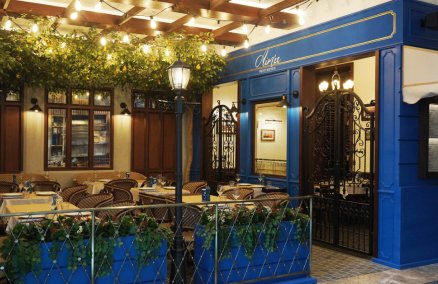The heavy blend of springy noodles, rolls of fatty meat and rich, salty broth make a good bowl of ramen something close to comfort food Nirvana. And thanks to Singapore’s massive Japanese community, we’re blessed with pretty much every ramen style out there. Here’s what you need to know about the major ramen regions of Japan, and where you can taste each style without leaving town.
Tokyo Ramen
Traditional Tokyo ramen typically features curly noodles in a dark, clear shoyu broth made of pork and chicken bones. This broth is sometimes based on seafood and dried fish. Common toppings are roast pork, scallions, seaweed and bamboo shoots.
Get it at: Tsuta Singapore, #01-01 Pacific Plaza, 9 Scotts Rd., 6734-4886, www.tsuta.com.
Hakata Ramen

The much-loved tonkotsu (pork bones) broth originated in Fukuoka prefecture in the southernmost Kyushu island. The result of cooking pork bones over a rolling boil for extensive hours, the thick creamy broth is packed with fatty goodness and deep flavors. Sitting atop firm, thin noodles, you’ll usually find roast pork, scallions, seaweed, pickled ginger, garlic and pickled mustard greens.
Get it at: Ippudo, #04-02 Mandarin Gallery, 333A Orchard Rd., 6235-2797, www.ippudo.com.sg.
Sapporo Ramen

Located in the Northern Hokkaido island, Sapporo is home to one of the newer styles of ramen. Characterized by a thick miso-based broth, the ramen is topped with ground pork, bean sprouts, cabbage and corn, which are sometimes fried in the miso beforehand. You’ll also often see it topped with a pat of butter.
Get it at: Sapporo Ramen Miharu, #01-06/07/08 Millenia Walk, 8 Raffles Blvd., 6733-8464, www.facebook.com/miharusappororamen.
Niigata Ramen

Niigata prefecture is famous for many things. Located on the western coast in central Japan, it enjoys great weather, abundant seafood and a reputation for excellent ramen, particularly the kind with a relatively clear shoyu (soy sauce) broth which sees any combination of tonkotsu, chicken and even dried fish for an incredible depth of flavour that is not too heavy or fatty.
Get it at: Sanpoutei, #01-01 253 Holland Ave., 6463-7277, www.sanpoutei.sg.
Plenty more where that came from. Bite! Japan is full of the latest Japanese restaurants and izakaya in Singapore, new promotions and bits of information to impressive your friends with. Keep track here.
THE BUILDING BLOCKS OF RAMEN
Broth

Broth is the core of ramen. The base defines a ramen’s flavors well before seasoning. Typical broth bases range from animal bones like tonkotsu (pork bones), tori (chicken bones) and gyokotsu (beef bones) to gyokai (seafood) and lighter variations made from sea kelp and dried seafood. Ramen is also defined by its heaviness: either kotteri (rich) or assari (light). The heavy, opaque kotteri broth, also known as paitan, results from long-boiled bones while the clear, thin assari broth is made of vegetables, seafood or briefly-cooked bones.
Tare

Tare (seasoning essence) adds flavors and character to the bowl, and can be mixed into the base or added later. Though all three of the main essences sound like they only account for saltiness, there are subtle differences. Shoyu (soy sauce) is the most common type and it benefits from round flavors and umami. Shio (salt) makes for a clearer and lighter soup both in terms of taste and color. Miso (soybean paste) adds body and pungency to the soup, resulting in bolder texture and flavors.
Noodles

Noodles are made from wheat flour, water, salt and alkaline water, and vary in their precise shape, thickness and texture—from thin to thick, straight or curly—to go perfectly with different soups. Some shops also let you pick the firmness of your noodles.
Toppings

Chashu (roast pork) is one topping you can find on almost every bowl of ramen, usually prepared by simmering pork in sweet soy and mirin (sweet rice wine) until tender. Ajitama (short for ajitsuke tamago, [seasoned egg]) sees a golden half-boiled egg marinated in soy sauce and mirin, which comes out slightly salty and sweet. Nori (dried seaweed sheet) is there to add a subtle seaside aroma and a little crunch between bites. Scallions are chopped and sprinkled over a bowl of ramen to power it with pungency. They're also the most typical topping in every bowl of ramen. Menma (pickled bamboo shoot) combines a crunchy texture with a slightly sweet flavor.
Like what you see? For regular updates on Japanese food and drink in Singapore, visit Bite! Japan.
| This post is brought to you by |  |
Advertisement















